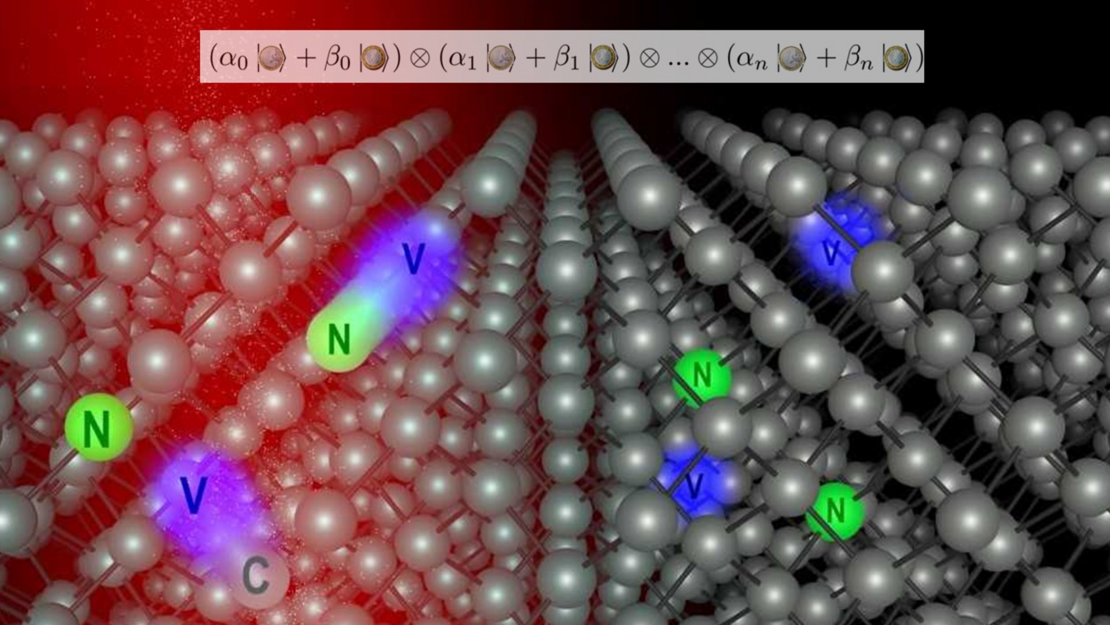This page contains automatically translated content.
Forschungsprojekt entwickelt mobile Quantentoken mit langer Speicherdauer
 Image: University of Kassel.
Image: University of Kassel.Der Experimentalphysiker Prof. Kilian Singer (Uni Kassel) koordiniert das Forschungsprojekt in Kooperation mit dem Helmholtz-Zentrum Berlin für Materialien und Energie GmbH. Im Rahmen des Forschungswettbewerbs „Grand Challenge der Quantenkommunikation“ wird es mit 1,12 Mio. Euro gefördert. Bisher werden zur Sicherheit von Datenübertragungen zum Beispiel Gegenstände wie Bankkarten, Transponder oder Transaktionsnummern als sogenannte Security Token genutzt, die Informationen zur Identifikation und Authentifizierung von Nutzern speichern und übertragen können. „Im Gegensatz zu dem gängigen Token wären die im Projekt entwickelten Quantentoken aufgrund unveränderbarer physikalischer Naturgesetze fälschungssicher. Denn der Clou an der Technik ist, dass die darauf enthaltenen Quanteninformation nicht kopiert werden können, ohne dabei verändert zu werden“, erklärt Prof. Singer. Mittels Quantentoken würden digitale Infrastrukturen sogar vor Angriffen durch leistungsfähige Quantencomputer geschützt. Mögliche künftige Anwendungen sind neben der Authentifizierung auch die sichere Datenspeicherung unter Einhaltung der Privatsphäre, sicheres verteiltes Rechnen, digitale Signaturen und fälschungssichere Dokumente.
Um das zu realisieren, müssen zuerst wichtige Schlüsselparameter quantenphysikalischer Systeme weiter verbessert werden. Im Projekt „DIamant-basierte QuantenTOKen (DIQTOK)“ entwickeln Forschende eine essenzielle Komponente: einen mobilen Quantentoken, der bei Raumtemperatur nutzbar ist und auch effizient in der Herstellung. Das geplante Quantentoken-Protokoll könnte auch deutlich längere Speicherzeiten von mehreren Stunden für die Quanteninformation erreichen. Bisher gehen Quanteninformation oft durch Wechselwirkungen mit der Umgebung schon nach Sekundenbruchteilen unwiederbringlich verloren. „Mit diesen Eigenschaften könnten wir sogar einen Quantenausweis herstellen. Das wäre eine nicht kopierbare, durch grundlegende physikalische Prinzipien gesicherte mobile Identifikationsmöglichkeit mit natürlichem Zerfallsdatum“, beschreibt Prof. Singer.
DIQTOK optimiert ein Materialsystem auf Basis von Stickstoff-Fehlstellen-Zentren in Diamant und passt es an die besonderen Anforderungen an. Hierbei kombinieren die Forschenden unterschiedliche experimentelle Methoden wie die Stickstoff-Implantation, die Elektronenstrahl-Lithographie und die laserinduzierte Ausheilung mit computerunterstütztem Materialdesign für die Herstellung der Zentren. Diese Zentren ermöglichen es, die Quanteninformation zu speichern sowie ein- und auszulesen. Für die Kontrolle der Quanteninformation, und somit auch für die Realisierung langer Speicherzeiten, werden Mikrowellen- und Radiofrequenzpulstechniken weiterentwickelt. Für den mobilen Einsatz wird das Quantentoken-System schrittweise immer kleiner gestaltet.
Kontakt:
Prof. Dr. Kilian Singer
Universität Kassel
Experimentalphysik I
Telefon: +49 561 804-4235
E-Mail: ks[at]uni-kassel[dot]de